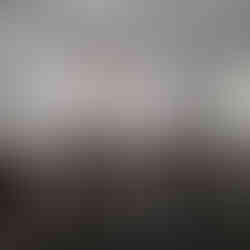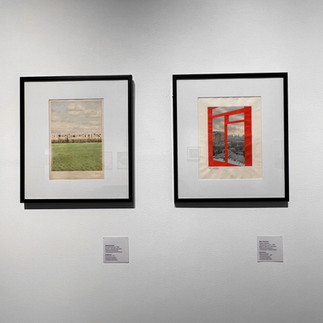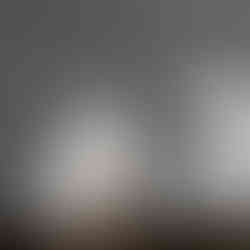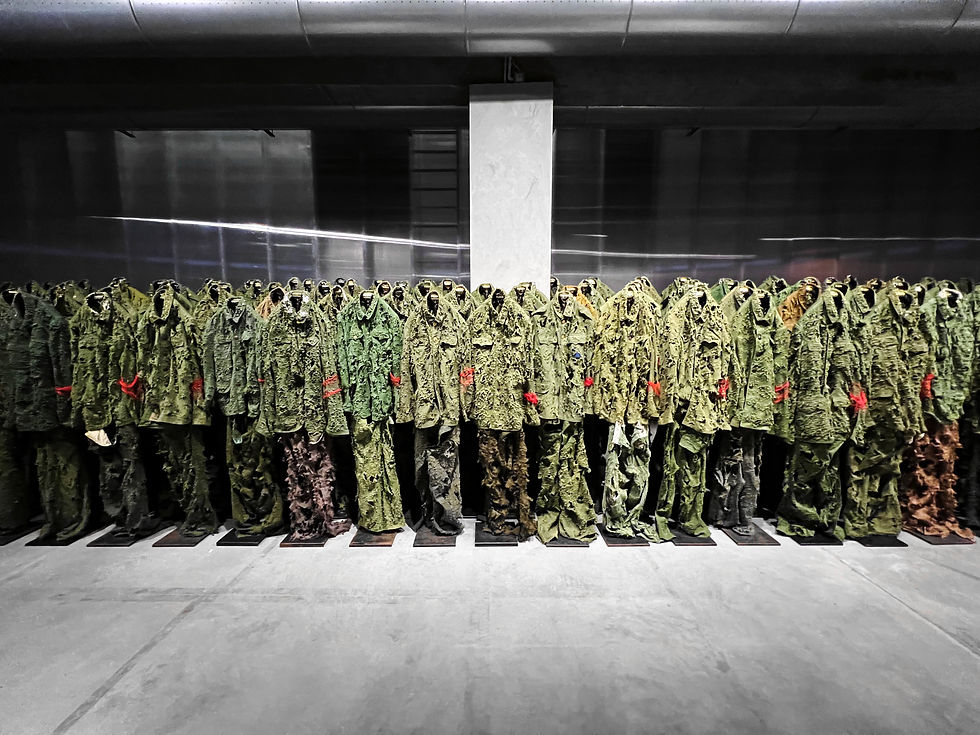Unveiling the Secret World of Moscow's Unofficial Art Scene in the 1970-80s
- Eva Gorobets

- Jan 7, 2022
- 10 min read
Updated: Aug 5
The "Ekaterina Foundation" hosts an exhibition of photographs by Georgy Kizevalter, which illustrate the unofficial artistic life of Moscow in the 1970-80s. The presented pictures are visual evidence of the atmosphere of the artists' workshops that was invisible to the external viewer, not involved in the countercultural layer. George, as one of the active participants, recorded events in which he was immersed himself - meetings, readings, promotions, unofficial exhibitions and simple, friendly gatherings. This archive was created over several decades and is not limited to the 1970-80s. The exhibition also presents later footage - up to 2020, which shows the workshops of "Moscow conceptualists" (Boris Groys term) scattered outside the capital of Russia. This is how we see Oscar Rabin's Paris room and Viktor Pivovarov's workspace in Prague. The curator of the exhibition was Elena Kuprina-Lyakhovich.
According to Georgy, this project had a long history of preparation. All the extensive material - in addition to the photos, artifacts from the shooting sites were collected - was carefully grouped and structured many years ago. The exhibition is accompanied by a catalog book, which included a large layer of photos, which could not be physically placed in the exposition space of the fund. This material has partly lost its relevance, according to the author himself. Since the protracted process of collection and preparation cooled the interest of all participants in the process. 4 years ago, in 2017, a home meeting organized by the Memorial International was held. The format of the event involved the exchange of memories of the central participants and the display of photos of Kiesewalter. Artists Boris Orlov, Igor Chelkovsky, Grigory Bruskin, Evgeny Ass, Yuri Yarin, poets Lev Rubinstein and Mikhail Aizenberg articulated the main trends in the time and role of the workshops, highlighting the works of art, theoretical texts and joint artistic actions that appeared at that time. A few years later, the project was finally implemented in the format of an exhibition.
It consists of 10 halls - classic white cube, each of which accommodates one or two locations with a specific workshop address. The entire space of the exhibition is divided into districts of Moscow - north, south, north-east, etc., where the represented spaces were located. Each address is accompanied by texts - a historical reference about the building or district and a quote from the artist. These statements are related either to the author's attitude to his place of stay and creativity or answer the question "what is art?" The exhibits themselves can also be divided into two groups: 1. photos of Georgy Kiesewalter; 2. artifacts in the form of works of art or theoretical texts created in the presented workshops. If the first group is mainly exhibited as printed photos of various formats in black frame and is located on the walls of exhibition halls, the second is placed on stands, cabinets and boxes specially made of plywood. It is important to note that most of the works of art are part of the collection of Ekaterina and Vladimir Semenikhin, the founders of the Ekaterina Cultural Foundation, where the exhibition takes place.
To analyze the concept and a critical view of this exposition, it is necessary, first of all, to determine the historical context of the observed period. The presented workshops are a space for the life and work of unofficial artists of the 1970-80s. The term "unofficial artists", or "unofficial art", unites those artists who were not banned by the current authorities or expelled from the country, like Oscar Rabin, but exhibiting their works in the spaces of the Union of Artists was undesirable and therefore not officially allowed. That is, they conducted their creative activities, but were excluded from the public artistic field. Nonconformists did not meet the requirements of official ideology and created their own cultural field. Self-organizing groups of art figures who fell under this characteristic created events and exhibitions on their own without attracting the attention of the mass audience and representatives of the official authorities represented by representatives of the Union of Artists.
The "Bulldozer" exhibition, held in 1974, became another (after Khrushchev's criticism of the "30 Years of the Ministry of Artists" in 1962, the exhibition "twelve" in 1967) catalyst for the unofficial movement, as it revealed the presence of "underground" artistic culture. And the fact of the forced interruption of the display of works in the wasteland in Belyaevo drew the attention of the artists themselves to their own, rather loose, community at that time. Moreover, nonconformist artistic activity attracted the attention of representatives of other types of arts - poets, directors, musicians, philosophers. Since the mid-1970s, friendly gatherings have taken the form of professional associations performing institutional functions - education, education, propaganda, development of theories and methods of cognition of art and the world around them.
In his article, Boris Groys called a group of nonconformist artists and poets "Moscow romantic conceptualists." This term is partly speculative, since "conceptualism", which appeared in Western Europe and existed in the original sense of the artist and theorist Joseph Kossuth, is not applicable to the unofficial art of Moscow. In his article "Art after Philosophy" he highlights the primacy of the idea over aesthetics and the rejection of the artistic or visual function of art. Which was not relevant for Moscow artists in the 1970-80s. But the "romantic" characteristics of the artistic life of that time can be traced very clearly. This is primarily a dialectical confrontation between the worlds - good and evil, official and unofficial, external and internal, public and hidden. A feature of art are fantasies and escape to another world, endowing the familiar world with its own microcosm and creating a mystical image of the creator and freedom fighter with mandatory personal conflicts and emotional experiences. The curator of the exhibition, Elena Kuprina-Lyakhovich, attempted to show this opposition. The photos depicted the hidden world of the underground, which differed from the world of officially recognised, public spaces. The workshop is not only the space where artistic products are created. It is one of the elements of the artist's meaning through his environment, people and objects. Moreover, in many cases, places for artistic activity were also places to live. On the one hand, the space of the workshop can be considered as a set of material objects characteristic of artistic production. On the other hand, as a set of ideas and events taking place in it. What we see in photos is not only an artist in the process of creating a work of art. This becomes impossible for those forms that do not imply a result of an embodied result - a tangible artifact. Therefore, in the photos, the viewer sees groups of people, a community of nonconformists who are in the process of communication, co-creation and cohabitation of situations. Whether it's the preparation of a action or discussion of theoretical - art, cultural, philosophical - ideas that were later published and disseminated. For example, on the pages of the magazine "A-Ya", which was published by Igor Shelkovsky in France from 1979 to 1985. The presented workshops can be called a kind of containers with various social processes and created products of creative activity.
Three layers can be distinguished in the exhibition itself: - Visual representation of workshops with characteristic interiors,
- Artifacts and their participants;
- Text support - toponyms, quotes, etiquette and descriptions of places with
- A historical reference of their appearance;
- The exhibition space of the "white cube" with its characteristic absolute cleanliness and pristineness.

The presented photos are, according to A. Lefebvre, "representations of space" through the optics of artistic action. This is the artist's view of his own place of residence and creation of ideas. At the same time, this optics is subjective because of its own position and assessment of the current situation by the artist. In this case, Georgy Kisewalter. The images are filled with signs referring to certain artifacts of artistic life - brushes, easels, paintings, sculptures. When showing the spaces of artists who create unmaterial artifacts, such signs are the participants themselves. Their designation through photo portraits connects the viewer with unofficial practices and products of their creativity. It is worth paying attention to the medium of the photo itself. The historicity, which is transmitted through monochrome prints, is sometimes interrupted by color photographs of Pivovarov and Rabin's workshops. Black and white photos are associated with the past, when the creation of color images was either unavailable or difficult to produce.
Accompanied text blocks are presented in different formats: etiquette, location toponyms, artist quotes and historical references about the place. As in the photos, the labels show the participants. This action (listing of names) is proof of a "clash" - the process of co-creation, interaction and mutual influence of nanoconformist artists on each other. This is a textual documentation of the existence of the counterculture community. Statements and quotes that were placed on the walls of the halls are also, like the photos themselves, a "representation of space", but through a different medium. They affirm the importance of the function of workshops as a social space. For example, Irina Nakhova's words are proof of this: "I remember our apartments best. In a sense, the specific spaces in which we gathered were more important than the people themselves. People created these spaces, and they adopted their individual properties and turned into specific labels on the map.
Although we still visit, these are only the remnants of that era of "continuous apartment communication." And all these different circles and poles coexisted peacefully. It was the communal, utopian life of artists without any competition."
If photos, etiquettes and quotes are complementary constructions in building the image of the workshop as a "bubbling cauldron" of informal artistic life, then toponyms and historical references play a different role. Specifying the addresses and areas of "boeling points" should cause the mapping process in the viewer's imagination. Most likely, the curator aimed to show the wide geography and spread of workshops throughout the city. Confirmation of this intention is, for example, the instruction "B. Gnezdikovsky, 10" and the only photo of Leonid Sokov related to this address. While the rest of the locations are more saturated with both photo documents and artifacts. But in order to start the process of drawing a map of the places of presence of artists, you need sufficient experience of living in the capital and good knowledge of the largest city in Russia. Is it enough for the viewer who came to the exhibition?..

The role of a textual description of the history of the construction of the building or the appearance of the area that accompanies each address is even less clear. Under the quote of Irina Nakhova, which was given above, is the following text: "Malaya Gruzinskaya, 28. In the early 20s of the 18th century, the territory of the current Georgian streets was granted by the young Russian Emperor Peter II as the place of residence of the Georgian king in exile Vakhtang VI and his retinue. A century later, mostly Russians already lived here, but Georgian names remained forever. In the middle of the 19th century, numerous industrial facilities and working dormitories were located in the area of Malaya Gruzinskaya, including the buildings of the furniture factory "Mur and Meriliz" built in 1902. Another historical attraction of the street is the Catholic Cathedral of the Conception of the Blessed Virgin Mary, built in 1911, which is the largest Catholic cathedral in Russia. In the early 1980s, Malaya Gruzinskaya occupied an important place on the unofficial cultural map of Moscow: here, in the basement of house No. 28 until 1991, there was the legendary exhibition hall of the Moscow City Committee of Graphic Artists - one of the few places where the Soviet viewer could see "other" art. Vladimir Vysotsky lived in the same house in those years. Through this text, an arch is created between the underground culture of the 1980s and the official order of Peter II. The question arises about how such a long and colorful history of the place influenced the work of Irina Nakhova. At the same time, the description of her landmark project, which was created in the artist's own apartment at the specified address - "Rooms", is omitted. It was a series of five total installations in one of the living rooms between 1983 and 1988. Irina reinterpreted the space in which her daily practices took place, and at the same time created an exhibition space for her experiments. The connection of the project with the history and architecture of the area, if traced, is only as an escape from this external, public, shell. Perhaps the curator was laid to show opposing worlds inherent in romantic characteristics. It follows from this logic that the texts of the description of buildings and districts had to become an external, "other" world within which hidden artistic processes take place.
The spatial solution of the exhibition is traditionally for the exhibition halls of the Ekaterina Cultural Foundation. The exposition was located on two floors without creating additional fences or other architectural interventions. Photos are placed on the walls in a row, interrupted by text blocks. Artifacts in the form of paintings, sculptures and objects are mainly located on stands and showcases specially made of plywood. All this causes a feeling of emptiness and sterility, which contrasts with the content of photos - representations of workshops. If the footage shows live communication and/or an active process of creating a work, the exposition zone rather refers to a scientific laboratory, where order and cleanliness should be observed according to the protocol of use of the premises.
As you can see, the exhibition is quite saturated with collected material - photos, items from the Semenikhins' collection, books. The released album, which can be purchased in a gallery store, indicates that the author, Georgy Kizewalter, and curator, Elena Kuprina-Lyakhovich, had to do voluminous work to select the exhibited items. It can be assumed that their choice was influenced by the importance of the culture of the artists themselves. Thus, the "group of Sretensky Boulevard", which included Ilya Kabakov, Yulo Sooster, Ernst Neizvestny, Eric Bulatov, Oleg Vasilyev, Vladimir Yankilevsky, Viktor Pivovarov, Ivan Chuikov, occupied half of the second floor. This community, which was concentrated in the center of Moscow, attracted a large number of not only artists, but also poets and musicians. The magazine "A-Z", which became a window for the European and American viewers to the countercultural life of Moscow, was also created by "retendents". Thus, the workshops became institutional mechanisms, thanks to which new trends were identified and the history of this artistic layer was preserved. But, as mentioned above, the exposition itself is heterogeneous and insufficient elaboration. Thus, there is an uneven volume of material in the representation of various workshops, illogical text support and weak elaboration of the concept itself. The name "Other spaces" requires a certain kind of conflict and confrontation. In the exhibition, the underground culture was placed in black frames and integrated into the classic "white cube", which does not give the viewer a full understanding of the "otherwiseness" of the unofficial artistic culture of the 1970-80s. Perhaps the inclusion of other media - video and sound, the creation of a "legend" (storytelling) based on a large number of artifacts and stories of living artists and other architectural solutions contributed to the deep immersion of the viewer in the atmosphere of hidden artistic life. For all the shortcomings of curatorial work, the historical contribution of Georgy Kisevalter's photos cannot be overestimated.








































Comments